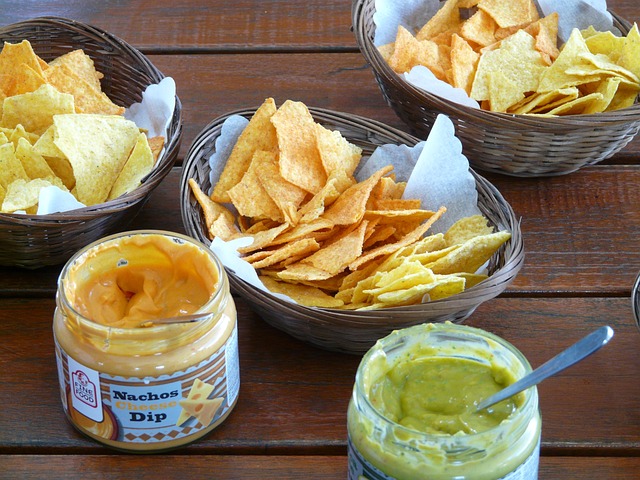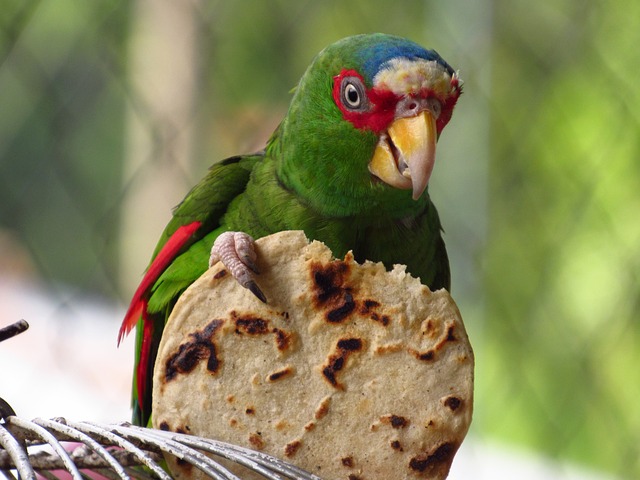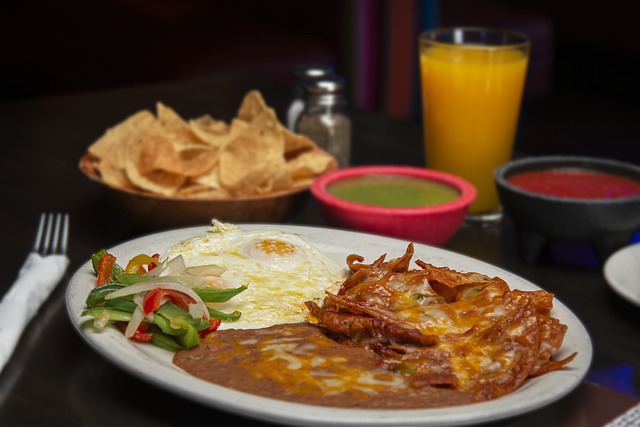Mission Restaurant Style Tortilla Chips are a culinary masterpiece, crafted with premium corn and time-honored techniques. The meticulous process involves resting dough, double-frying for crispness, and using traditional methods passed down through generations, resulting in chips with a crispy exterior and tender interior. These chips blend the vibrant colors and authentic flavors of Mexican markets with modern production, appealing to locals and tourists alike. Hand-rolled triangles cut from flattened tortillas, fried at precise temps, and seasoned perfectly, they capture the essence of Mexican cuisine.
“Discover the tantalizing world of homemade tortilla chips, a staple in Mexican markets, especially in their signature ‘Mission Restaurant Style’. This article delves into the intricate art of chip-making, from traditional techniques passed down through generations to modern market trends. We explore the key ingredients that define authenticity and the various hand-rolling methods used.
Join us as we navigate the business side of selling these crispy treats, uncover their cultural significance across regions, and provide tips for achieving that authentic Mission Restaurant Style at home.”
- The Art of Making Mission Restaurant Style Tortilla Chips
- Traditional vs. Modern Mexican Markets: A Comparison
- Key Ingredients and Their Role in Authenticity
- Hand-Rolling Techniques and Equipment Used
The Art of Making Mission Restaurant Style Tortilla Chips

Making Mission Restaurant Style Tortilla Chips is an art that combines tradition and precision. The process begins with selecting the finest corn, carefully ground to preserve its natural flavors and textures. This traditional method ensures each chip captures the essence of authentic Mexican cuisine. After mixing with water, the dough rests, allowing the starches to bond and create a perfect consistency for frying.
The dough is then shaped into thin, circular pieces, hand-rolled or pressed to achieve the characteristic thin, flexible texture. These delicate chips are fried in hot oil until golden brown, resulting in a crispy exterior and a tender interior. The secret lies in the double frying technique, which not only gives them their signature crispness but also ensures each chip remains light and airy. This meticulous process produces Mission Restaurant Style Tortilla Chips that are truly a delight for both taste buds and eyes.
Traditional vs. Modern Mexican Markets: A Comparison

In traditional Mexican markets, the art of making tortilla chips is an age-old practice passed down through generations. These markets, often bustling with vibrant colors and lively vendors, are a cultural tapestry where authentic flavors thrive. Here, the process is a labor of love, with each chip crafted from scratch using time-honored techniques. The aroma of freshly made tortillas fills the air, enticing customers to sample the crispy, golden treats. Traditional methods ensure that every bite captures the essence of Mexican cuisine, making it a sensory experience like no other.
In contrast, modern Mexican markets showcase a blend of old and new, including the popularity of Mission Restaurant Style Tortilla Chips. These chips have gained a loyal following for their distinctive texture and savory flavor. While maintaining some traditional elements, modern market vendors often incorporate innovative techniques and equipment to streamline production. This evolution in preparation methods has made these restaurant-style chips more accessible, appealing to both locals and tourists seeking that familiar taste with a contemporary twist.
Key Ingredients and Their Role in Authenticity

The heart of any authentic Mexican market lies in its fresh, homemade tortilla chips, a culinary staple known for their crispy texture and subtle corn flavor. To achieve this perfect balance, local chefs rely on key ingredients that have become integral to their traditional recipe for Mission Restaurant Style Tortilla Chips. The primary ingredient is, of course, high-quality cornmeal, carefully selected for its ability to produce a light, yet robust chip. This is combined with a simple blend of salt and baking soda, which not only enhances the flavor but also ensures the chips achieve that perfect golden brown hue.
The process of making these chips involves a careful dance with temperature and time. Using traditional methods, tortillas are hand-rolled and then cut into uniform triangles before being fried in vegetable oil at just the right temperature to preserve their crispness. This meticulous approach ensures that each chip not only tastes authentic but also resembles those found in bustling Mexican markets across the country, making them a beloved treat for both locals and visitors alike.
Hand-Rolling Techniques and Equipment Used

In traditional Mexican markets, the art of hand-rolling tortilla chips is a centuries-old practice that produces crispy, authentic treats. Sellers use a simple yet precise method, often passed down through generations, to create what many refer to as Mission Restaurant Style Tortilla Chips. This technique involves flattening corn tortillas by hand or using a wooden palet, then cutting them into thin strips before carefully curling each strip to form the iconic chip shape. The rolling process is both an art and a skill, ensuring each chip retains its delicate texture and golden hue.
The equipment used in this traditional method is minimal. Most vendors opt for a smooth stone or wooden surface for flattening the tortillas, alongside a sharp knife for precise cutting. Wooden sticks or specialized chip-rolling tools may be employed to shape the chips, adding a touch of rustic charm to the overall process. This hands-on approach not only preserves the traditional flavors but also allows for a level of customization that mass-produced chips can’t match.
Mexican markets, both traditional and modern, offer a delightful dance of flavors with their homemade tortilla chips, a testament to the country’s culinary richness. By exploring the art of making Mission Restaurant Style Tortilla Chips, understanding key ingredients, and witnessing hand-rolling techniques, we’ve unraveled the secrets behind this beloved snack. These chips not only enhance everyday meals but also serve as a gateway to experiencing the authentic Mexican spirit in every bite.
